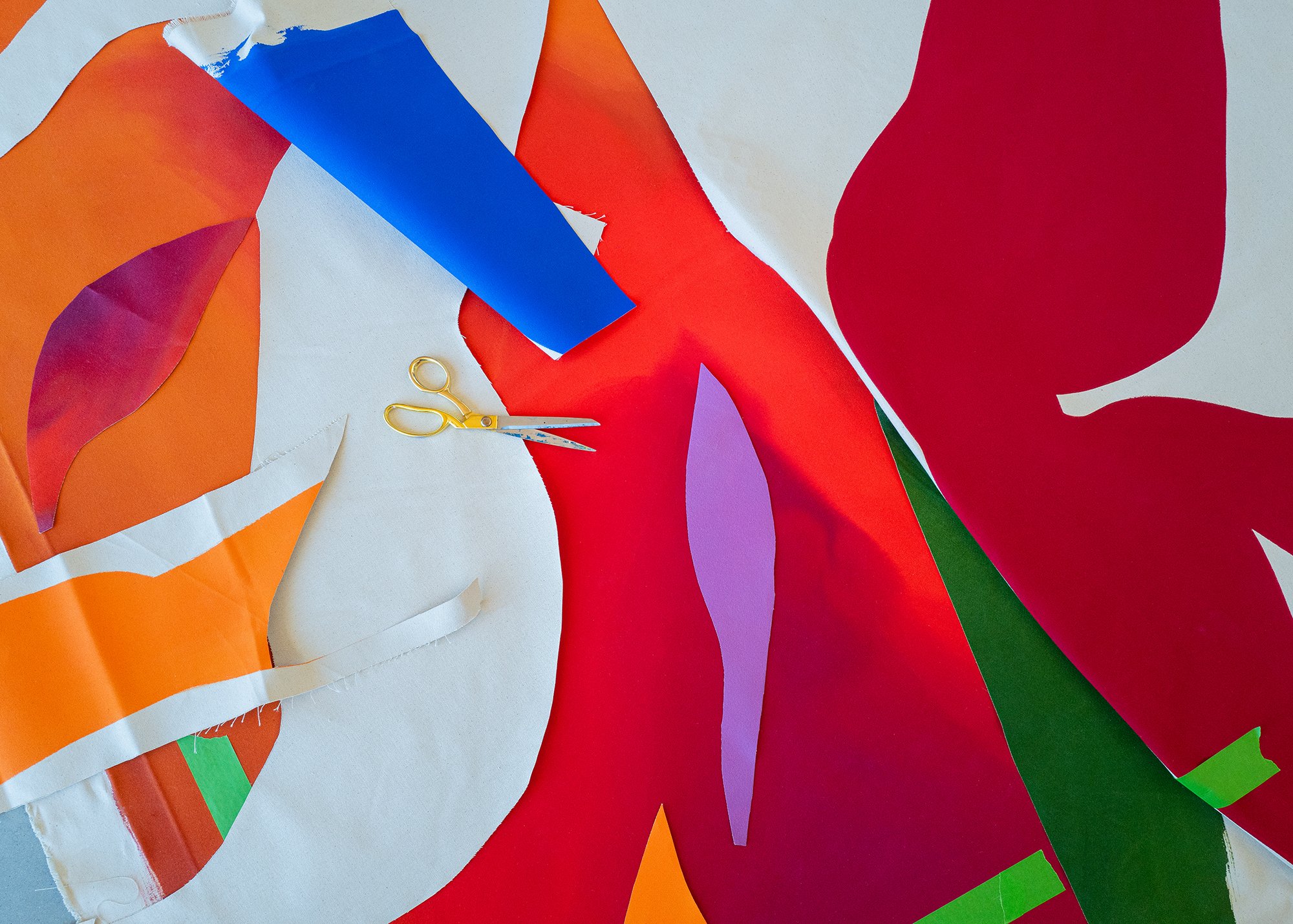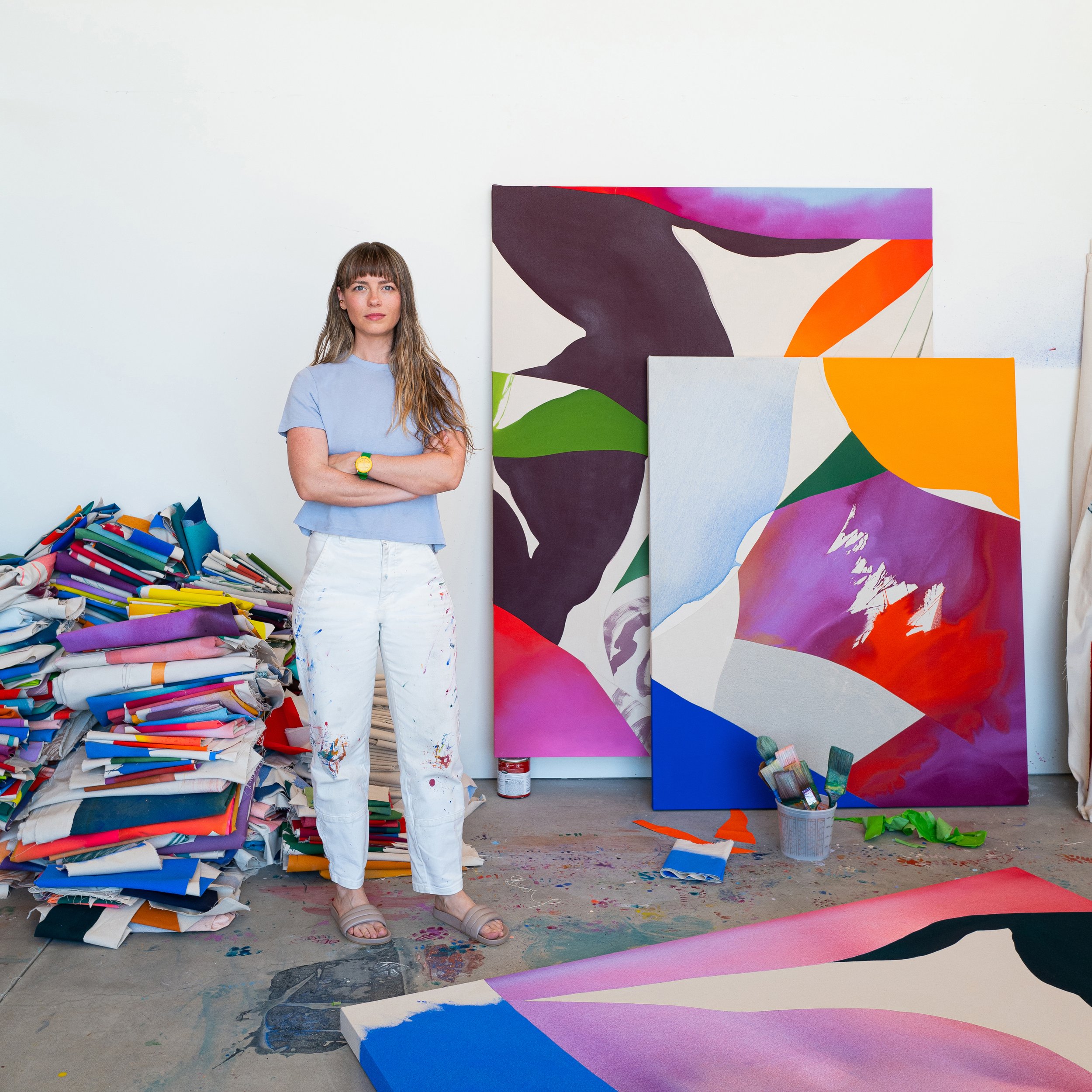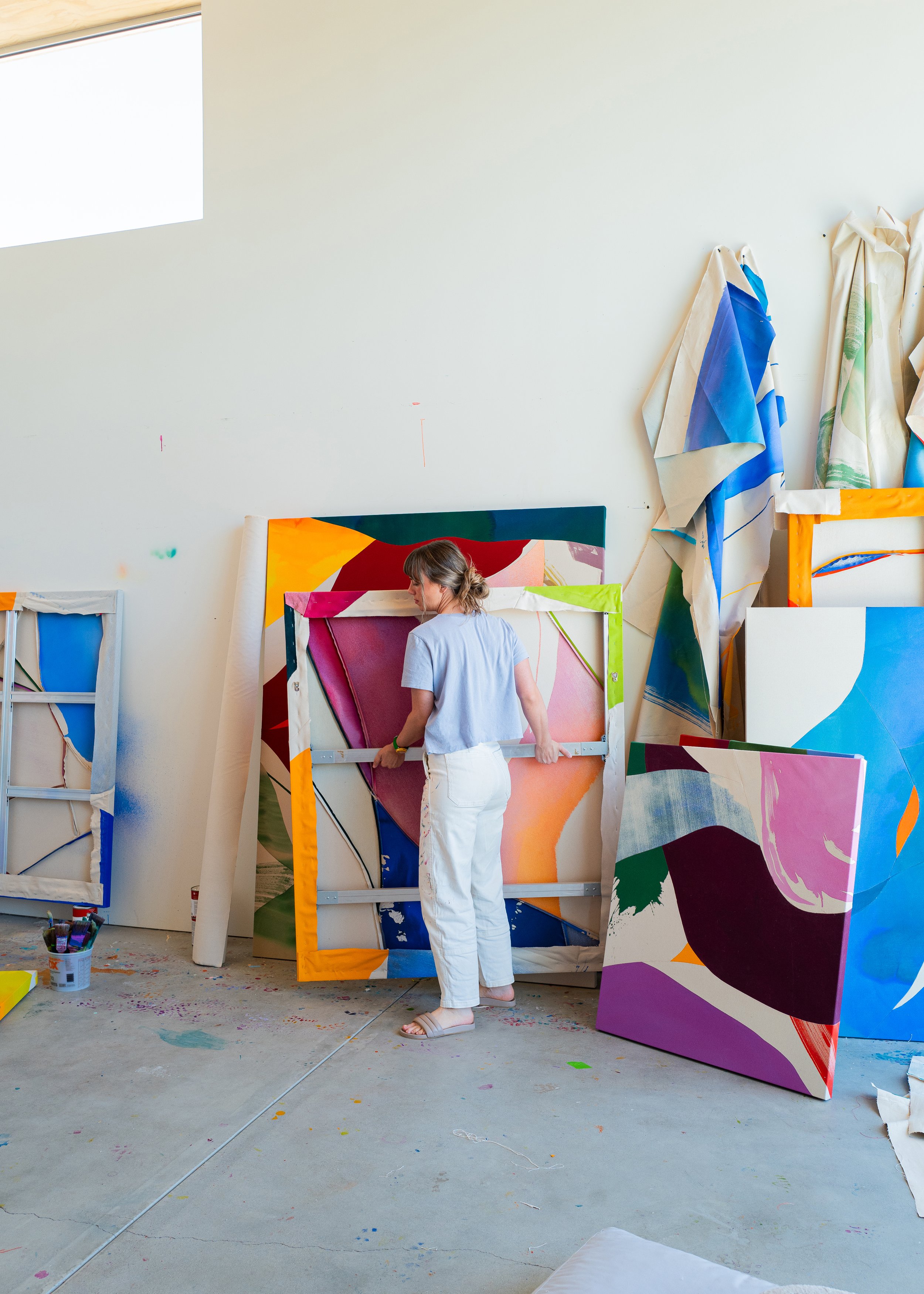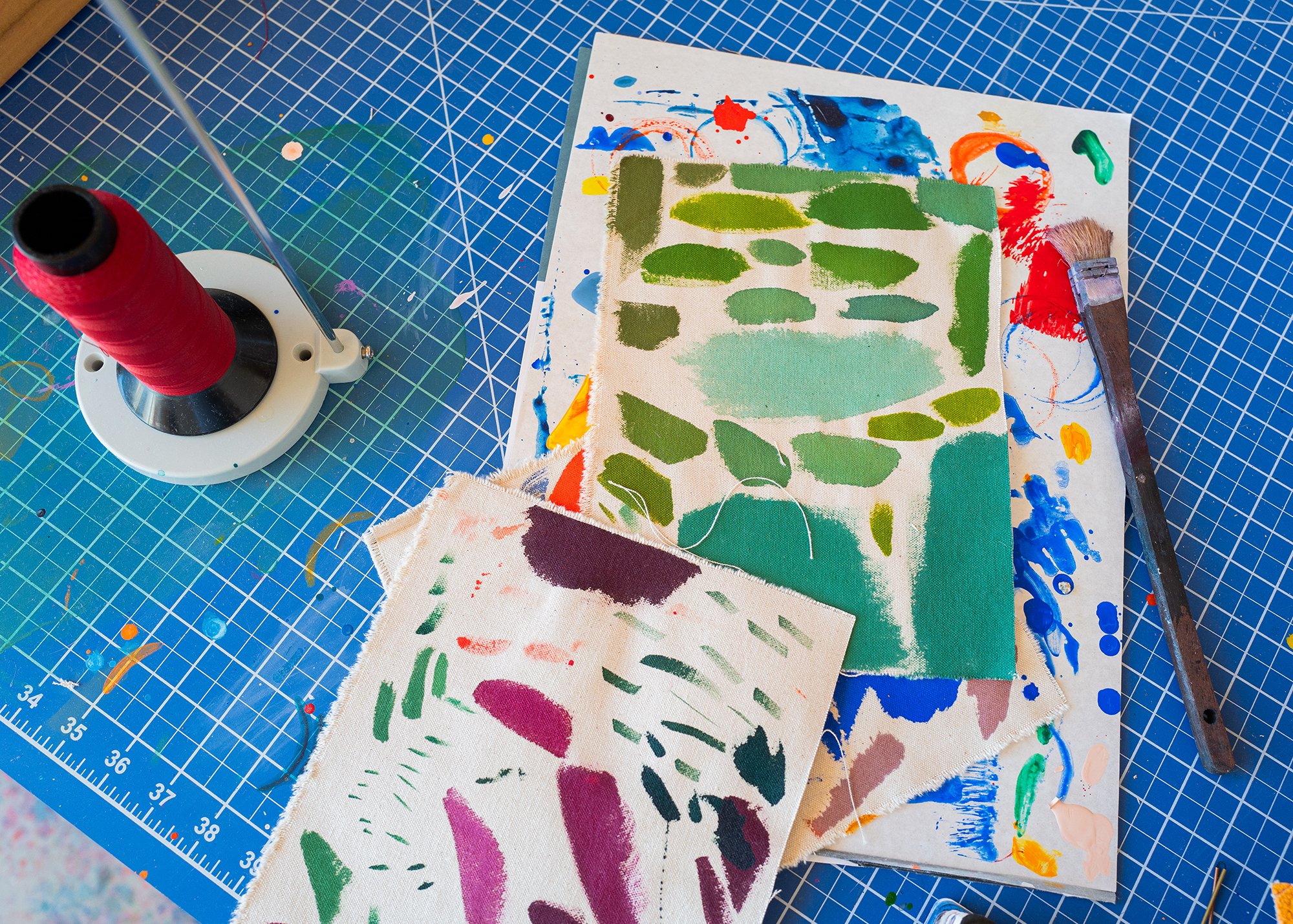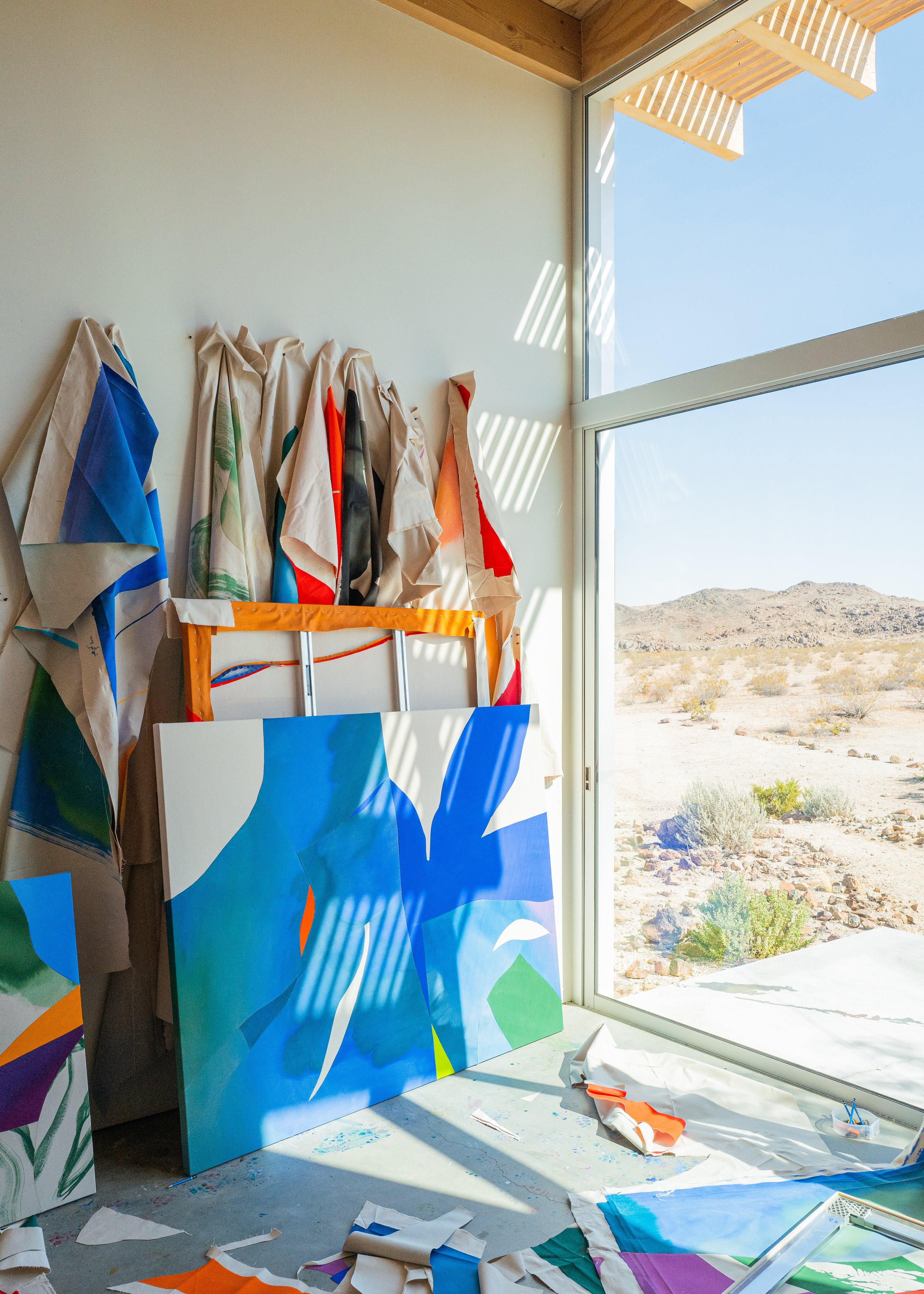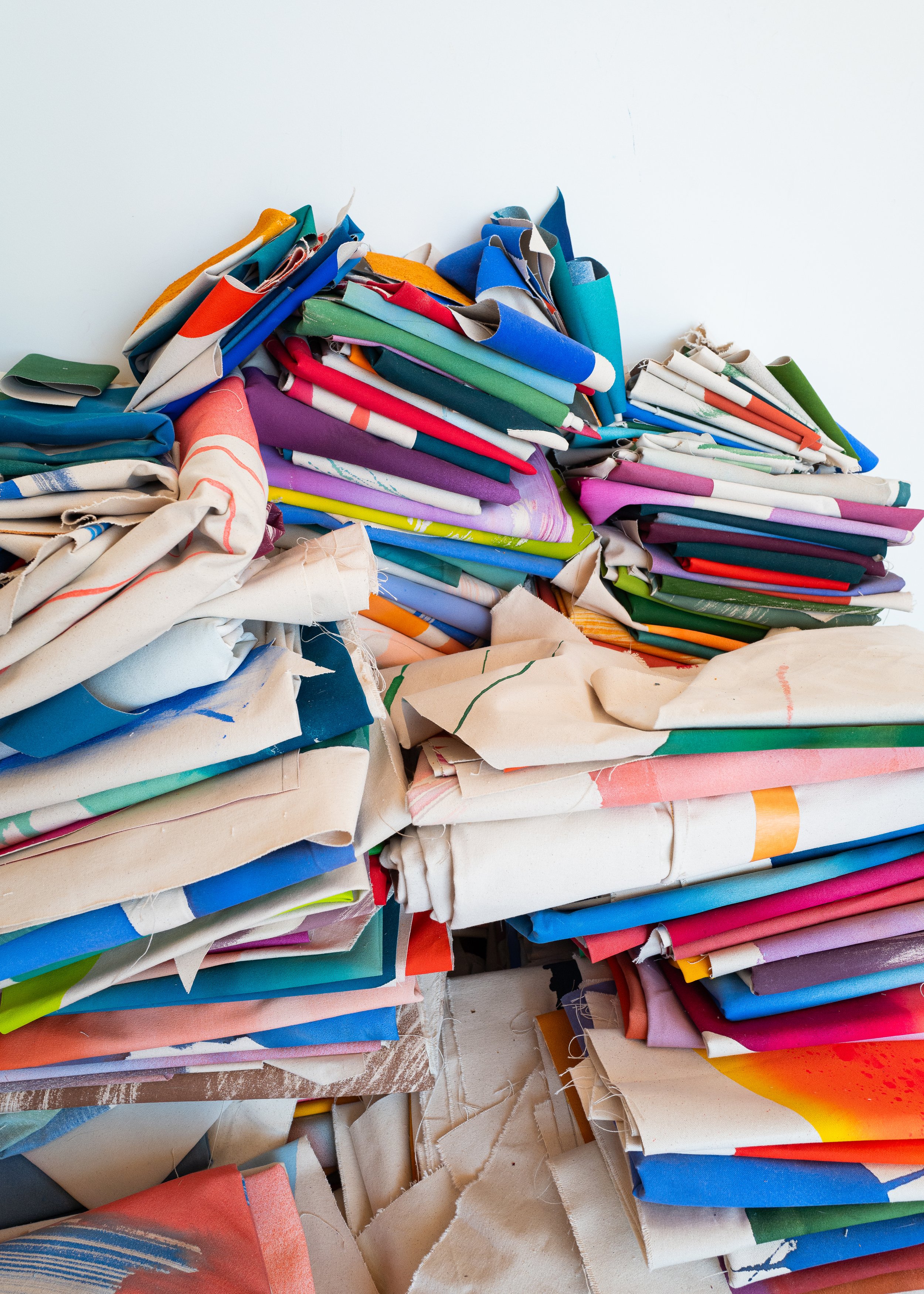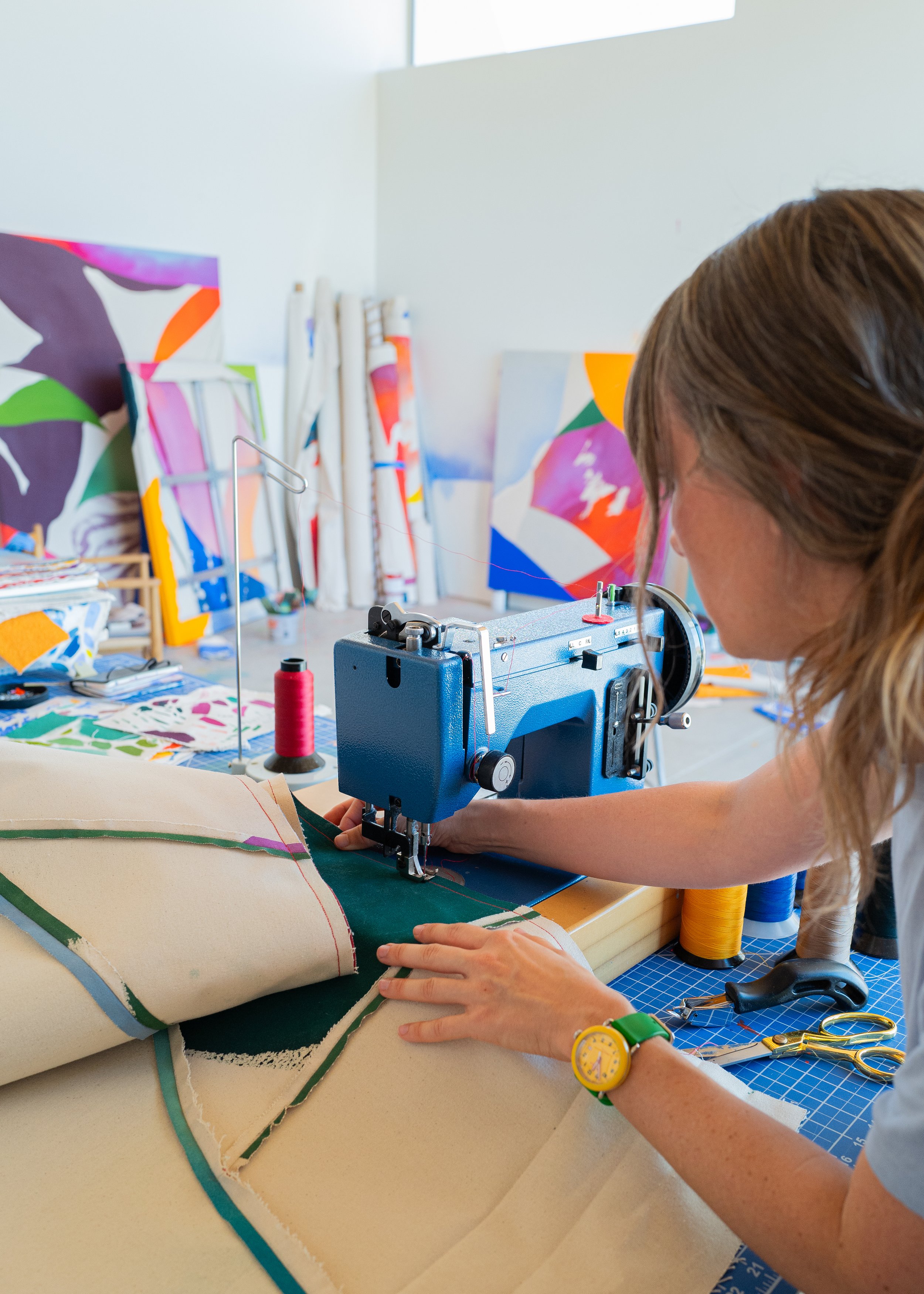W Magazine Studio Visit
“In Colorful Desert Paintings, Heather Day Creates (and Breaks) Her Own Rules”
Excerpt taken from W Magazine studio visit:
”It’s an ingenious twist on Color Field artists like Helen Frankenthaler, and Sam Gilliam’s iconic drape paintings, where he suspended unstretched fabric from the wall and ceiling. Day meticulously assembles painted fragments on the floor within the rectangular window of a stretcher bar before sewing the panels into a final, lush composition. “I’m able to build a relationship between my past and present self, where I’m constantly pulling back and looking back,” she says of her signature technique. “I view the canvas as this stage where performance happens, and I’m able to use my body and [my] medium in a certain way—flick it or pour it or have it splash onto the canvas.” For example, she points to a new work comprising five different canvases, painted at different periods over the last four years, including a red-silver panel from a previous gallery show. “There’s a destructiveness to rearranging everything,” says Day, who relates her dyslexia to this way of thinking in puzzle pieces.
When we meet, she’s gearing up for a summer solo show, her debut at San Francisco’s Berggruen Gallery, Heather Day: Cut, Split, Horizon which opens August 1, on view through September 19. “I’ve noticed the female form starting to creep into my work,” she says of the show’s 14 new paintings. “There are a lot of forms in the natural world that rhyme with the human body.”
Demand for the 35-year-old’s work has surged since the pandemic and the building of her minimalist oasis, which she shares with her husband and small Terrier mix, Juno. The past year has been especially packed, from selling out an Armory Art Fair booth in the first few hours of the VIP opening last fall, to two major gallery exhibitions in Berlin and Paris this spring (which also sold out). But there is nothing frenetic about her. Day possesses a preternatural calm. In a frantic art world, Joshua Tree allows Day to take a wider perspective. On a practical level, her studio is six feet below the couple’s living room, affording a bird’s-eye view of works-in-progress. Most mornings, she arrives in her atelier by 8 (if she wasn’t working until 3 AM), where massive sliding glass doors survey a lunar-esque panorama of a mountain and boulders that geologists date to a million years ago. “Coming from San Francisco to the desert, I’m dealing with the humidity levels in the studio,” she says. “So, I’m not only looking out at the environment and that’s soaking into the paintings, but also how fast the water or the medium is evaporating, and how fast my paint dries.’”
Written by Jacoba Urist
Photography by Chase McBride
To read the full article, click here.
